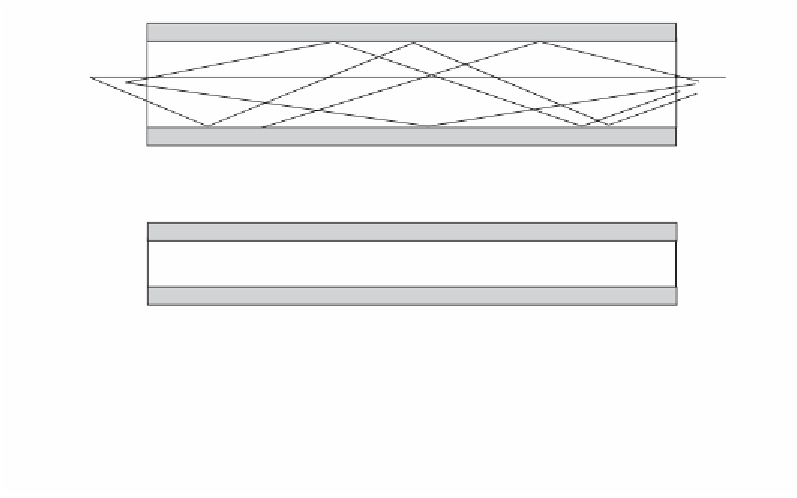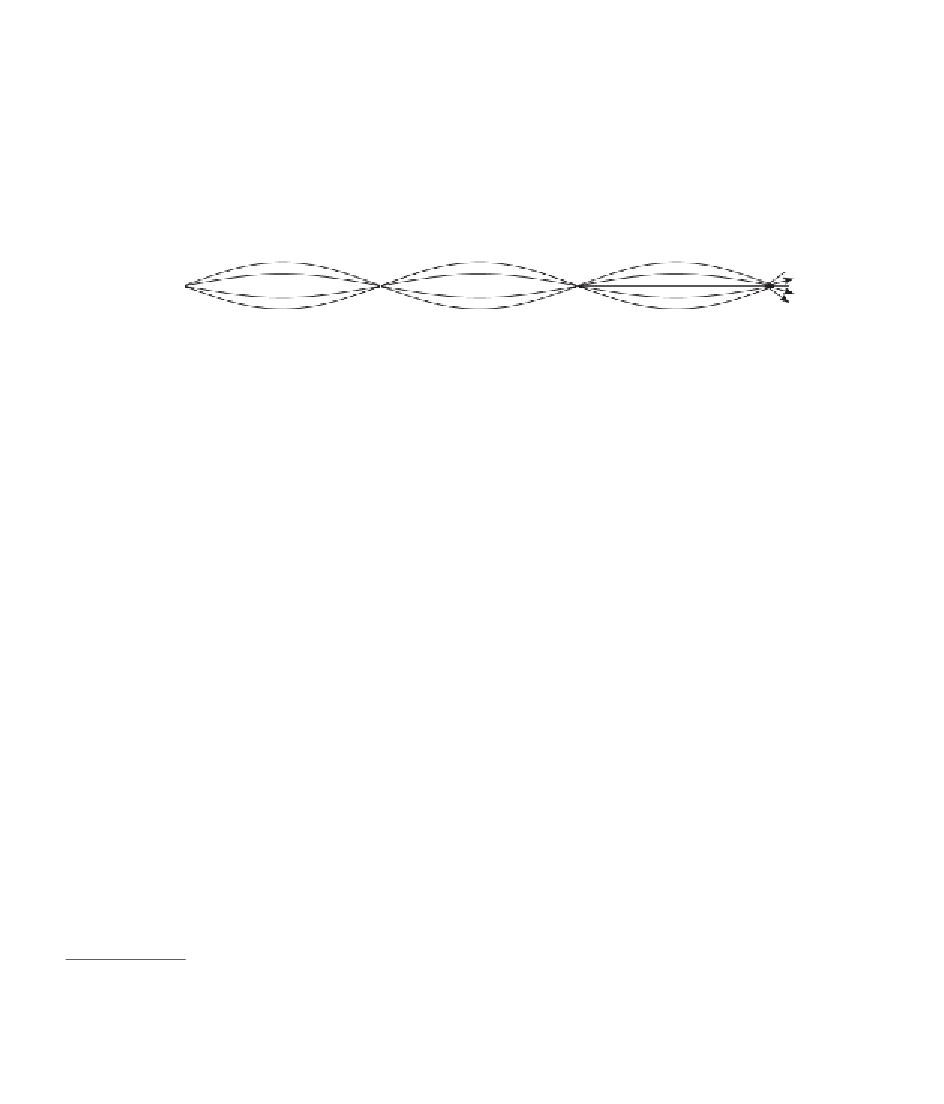Information Technology Reference
In-Depth Information
Cladding
Step-index
multimode
fiber
Core
Graded-index
multimode
fiber
Cladding
Core
Single-
mode
fiber
Cladding
Core
FIGURE 11.2
Light transmission through an optical fiber.
diodes are two examples of semiconductor light sources that are used in fiber optics.
Photodiodes and phototransistors are examples of fiber-optic detectors.
The entire portion of circuitry that converts the electrical signal to light is
called simply the
transmitter
, and it includes the light source. Likewise, the circuitry
that detects the incident light and converts it back to an electrical signal is called the
receiver
, and includes the light detector. In many fiber-optic applications, the trans-
mitters and receivers are actually prepackaged devices that are simply mounted on
the circuit board of the optical equipment.
Most fiber-optic interfaces are technically
simplex
connections—that is, either
for transmitting or for receiving, but not both. Two interface connections, one for
transmit and one for receive, are required to make a complete connection. This two-
connector arrangement forms a
duplex
connection.
2
The optical connections to an
2
The reason for using this two-fiber duplexing scheme is that it is simple and cheap, with respect to
transceiver optics. However, there are other methods for duplexing onto a single fiber. One method uses
special optics to split the transmit and receive beams of light at each end of the cable. This method, tech-
nically called wave-division multiplexing (WDM), allows different wavelengths (colors) of light to be
used for transmit and receive. A coarse version of this uses 850 nm for transmit and 1300 nm for receive
functions at one end of the cable, and, of course, reverses the functions at the opposite end. Beam split-
ters and optical filters separate the two light wavelengths and allow both to share the single fiber.







